Camping in the wilderness is a beautiful experience of adventure, recreation, and bonding. Each family, situation, and dynamic is different, which is why camping is such an excellent experience. There are so many different camping styles; there’s bound to be one that fits your every need and preference. Do you want more primitive camping? Or something more luxurious? Follow this guide to learn the basics of different camping styles so that you can choose the best one for you!
What is Camping?

Camping is an outdoor activity that includes staying overnight with or without a shelter in the wilderness.
Many people have different ideas about how to camp, but there are many different camping styles. You can camp from a car, a canoe, or your literal back. No matter the style, camping is about getting outdoors and away from the hustle-bustle of everyday.
You May Also Like: Exploring 20 Types Of Lighters: Finding The Perfect Flame For Every Occasion
Benefits of Camping
There are significant benefits to camping that can improve your health mentally and physically.

For one, the fresh air from spending time outside around trees increases your oxygen, making your body release extra serotonin. Some studies even show that increased time outdoors can boost your immune system, improve your blood pressure and improve your mental health. Just this list alone convinces me to head out into the woods!

Another great benefit of camping is that it allows you to socialize and have fun. If you bring friends along, you’ll be sure to have a great time. Camping can inspire you to put down your devices and enjoy your time being in the moment with your friends and family.
Being outside in the sunlight will also even out your levels of melatonin. You can thank melatonin when you feel overly tired or feel depressed.
Some forms of camping can be extremely relaxing, which helps you deal with and process stress. After a short time in the woods, you may feel your body start to release some of its tension, and you can enjoy the release of physical and mental strain.

Camping is also amazing to get some exercise. Even if you are a campsite dweller, you’ll find yourself burning more calories by setting up your site and moving around more. Many people take advantage of the outdoors by fishing, hiking, biking, kayaking, and so forth. Just remember to bring some extra food along since you’ll be burning so many calories!

Speaking of food, camping is a great way to enjoy the benefits of good eats. If you fish, you’ll be enjoying preservative-free, vitamin-packed, and fresh fish for dinner. Likewise, if you are a hunter and you’re enjoying your meal from a day of hard work. Even if you are neither of these things, camping offers a fantastic opportunity to learn how to cook over an open fire. Put together your campfire cooking kit and get creative with your food. There are no microwaves in the woods!

One of my favorite benefits of camping is enjoying a fantastic night’s sleep under the stars. After working my body hard all day with outdoor activities and soaking up all of the sun, I can’t wait to crawl into my sleeping bag and enjoy a night of absolutely no artificial light and the sounds of the woods whispering me to sleep. In the morning, enjoy slowly waking up with the rising of the sun. It sure beats my weekday A.M. alarm clock!
You May Also Like: Ways and 11 Tips to Sleep Comfortably in a Tent!
Camping Stats

You might ask yourself, who goes camping? And how many nights should I camp for? Some of these incredible camping statistics might answer your questions.
- In 2018, 65% of people who camped stayed in private or public campsites.
- 56% of campers are Millennials
- 81.6 million American households camped in 2020
- 96% of campers enjoy camping with family and friends and feel healthier because of the benefits of outdoor activities.
- 60% of camping is done in tents, making it the most popular way to camp.
- Cabins have increased in popularity among Baby Boomers, and glamping has grown in popularity with Millennials and Gen Xers.
- Camping is becoming more diverse. 60% of first-time campers in 2020 are from non-white groups.
- Camping in recreational vehicles (RV) is rapidly increasing in popularity.
- The number of people who went camping increased by 5% in 2020 due to the COVID-19 pandemic.
- The average amount of nights spent camping is 4-7 across the board, despite the family size and amount of people.
- Most people camp with a significant other, followed by camping with their family, and third camping with their friends.

SHARE THIS IMAGE ON YOUR SITE
<a href="https://outforia.com/CAMPING-STYLES/"><img style="width:100%;" src="https://outforia.com/wp-content/uploads/2023/01/camping-styles-infographics-683x1024.jpg"></a><br>CAMPING STYLES <a href="https://outforia.com">Outforia</a>
6 Different Camping Styles
1. Minimalist Backpackers

Backpacking is one of the most extreme forms of camping and the best way to get to some of the world’s most remote places.
Backpackers carry all of their gear literally in a backpack on their bodies. Backpacking may include a small tent specifically for backpacking, a hammock tent, or no tent at all. All gear brought by a backpacker needs to be lightweight or ultra-lightweight.
If you choose to go backpacking, you are in for a one-of-a-kind experience, unlike anything you’ve done before! Just keep in mind that you need to research before heading out on the trail.

Backpacks themselves come in different shapes and sizes and are purchased based on your needs and the length of your torso. Packing backpacks takes practice and skill, so you will have the correct balance and weight while you’re hiking to your destination.
Some trails offer campsites that are either free or need a permit, such as the Appalachian Trail or the John Muir Trail. Other trails have no specific grounds, and you will have to follow the regulations of the state or park. Some states allow fires but only for cooking purposes, whereas others do not.
Gear and gadgets for backpacking are specialized and can be pretty pricey. Backpackers carry small compact stoves, compact sleeping bags, and dehydrated food. Most gear only weighs a few ounces and takes up less than half a foot of space at most.
Most backpackers will carry an average of 20 Lbs of gear, food, and water with them. More experienced backpackers will carry up to 30 Ibs, and ultra-lightweight campers will carry less than 15 Ibs.
Some backpackers camp with canoes or kayaks on rivers or the sea, and these campers can bring a bit more with them and need specialized gear for water.
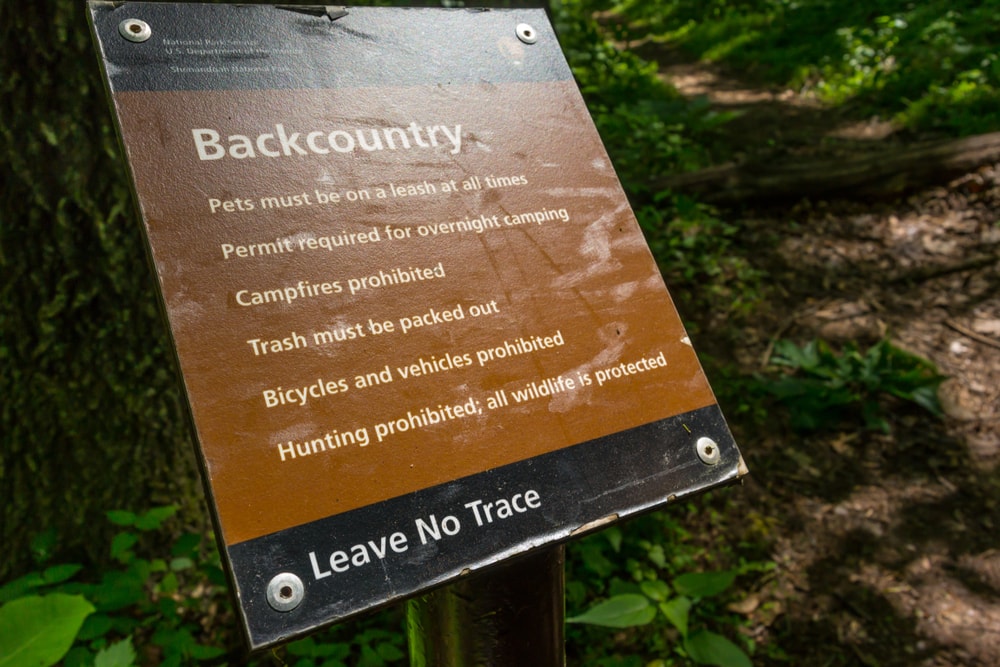
Backpackers practice the Leave-No-Trace principles, which are great for anyone traveling into the woods. The easiest way to remember LNT is to think that you literally do not want to leave a trace of ever being in the wilderness. If you bring something into nature with you, it comes out with you.
Backpacking sites typically rent for under $10 a night, so backpacking costs depend on your gear. For a fully stocked outfit for yourself from reliable and tested brands, expect to spend somewhere between $500 – $1,500 on your equipment. The significant part about this is that once you have your gear, you can re-use it for a very long time to come.
Don’t worry about the cost of getting started. Local outdoor stores and groups can provide sources for budget-priced gear. Most backpackers replace equipment with gear that’s lighter, performs better and costs a bit more.
2. Car Camping

Car camping is the most popular form of camping because of its affordability, accessibility, and benefits.
Car camping, or ‘tent camping,’ requires a tent. There are books written on different tents, but to put it simply, there are tons of varying tent options best to fit you and your favorite way of camping.
Starter family tents can be found at outdoor-oriented stores easily and offer many benefits to tent camping. Just be careful when purchasing these tents! Many of them leak in rainfall and will not withstand heavy winds. If you buy these tents, do some serious research and invest in some seam-sealers. With all of this said, these tents can be great for first-time campers and will do a great job of providing shelter for sleeping and storage.

Higher quality tents will be more weather resistant and may offer more ‘tent amenities’ such as storage pockets, ‘garages,’ multiple rooms, or easier setups. Higher quality tents will also cater to specific needs, such as all-season tents and backpacking tents. High-quality tents either come with or come separate from a footprint. Ensure you get a footprint with your tent, which helps keep it dry in inclement weather and protects the bottom.
Tent size is calculated based on the number of people it can accommodate. However, this number can be deceiving because this measurement leaves no room for gear. So keep this in mind that if a tent says it’s a four-person, that’s four people sleeping side by side with no extra space for clothes, gear, or breathing room. Tent sizes can range from 2 persons to 10 persons.

The gear choices to bring with you while car camping is endless; some people bring pop-up kitchen tents with bug screens to keep bugs out while making and eating meals. Camp stoves are popular among car campers for easy and compact cooking. Large totes help carry and store everything easily in your car and at your site.
Some car campers choose to bring a lot of gear, whereas others pack lightly. When you start out camping, you most likely won’t have much equipment, and that’s okay! Check out other people’s setups (without being nosy or creepy) and see what other options are out there.
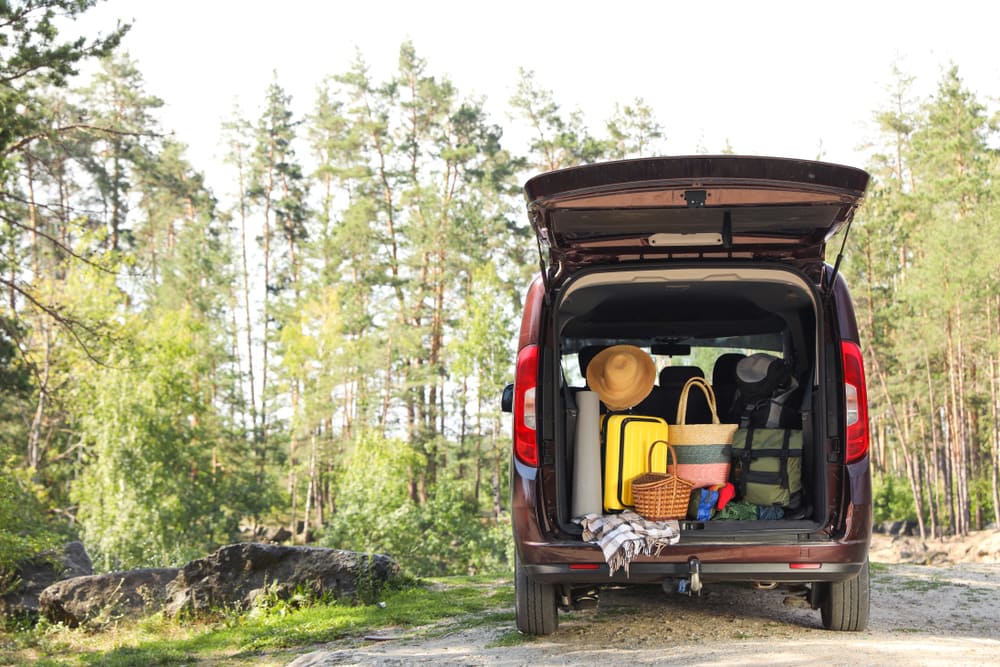
The benefit to car camping is that you can pack whatever you can fit into your car. Meaning you can fit larger things like camp chairs, large coolers of food, and full kitchen set-ups.
Campsites for car camping can vary wildly from campsites with amenities such as pools and playgrounds to remote primitive camping. The average tent campsite offers somewhat private sites with shared bathrooms. Double-check if a campsite offers showers while reserving a spot because these are often listed separately from bathrooms.
Most campsites will offer a fire ring (some don’t allow fires or only allow raised fires), a picnic table, a flat space for your tent, and firewood for purchase.
Campsites will often range from enough room for your car and tent to spacious with room to spread out. Group campsites are usually available so large extended families or groups of friends can all camp together.

Primitive campsites offer no amenities, with sometimes the exception of a campfire ring and tent platform. This type of camping requires you to do some research on Leave-No-Trace camping. Most primitive campsites that are drive-up typically provide you with outhouses or portajohns. If the campsite has water, they will tell you if it is potable – or drinkable – or not. If not, you can use this water to clean and shower (safely, following the rules), and you will need to bring in water with you.
All types of camping require re-planning and research. Don’t forget to research local wildlife before leaving your home particularly when planning to have car camping in bear country. No matter where you are, it is recommended that you leave your food, cooler, and bathroom supplies in the car overnight to keep animals away from your site.

Campsites can be found everywhere, from the woods to the beach, flower fields, and everything in between!
Campsites are incredible at giving information and answering questions. National, state, and private campgrounds will often have pictures and reviews on their websites. They want you to have the best time possible while being safe and knowing precisely what to expect.
Campsites average around $15 to $25 per night, while group sites cost $50 to $80 per night.
3. National and State Park Camp Cabins

One unique amenity that National and state parks provide is cabins. Some private campsites also pride cabin camping along with glamping. Cabin camping can be a great way to experience camping without all of the gear.
A cabin will provide you with a structurally sound building that will not be affected by rain, snow, heavy winds, or overall-the-world-is-ending type weather.
Cabin camping will provide you with a relatively bug-free space with a nice comfortable bed to sleep in. Depending on the amenities provided by the campsite, you may not even need to bring bedding with you! Some cabins offer woodstoves so you can stay in them all year round, along with kitchenettes so you can cook your dinner inside.

One of the great benefits of cabin camping is that there are often group rates where you and your extended family can rent out multiple cabins. It’s great to have a nice vacation with your family where bonding and fun times can happen without being too close.
Depending on where you get your cabin, you may have full access to electricity, meaning the site may provide refrigerators, dishwashers, outlets to charge devices, and more. Some cabins offer attached bathrooms, but this is less likely. Typically, campers share a bathroom with surrounding cabins in a central location.
Many people find more security with a cabin. Not only for the personal safety of keeping wildlife out of your tent but also for protecting your belongings. More and more people are hitting the woods these days, so the security of your gear may become a concern. While this isn’t usually a concern, it may be if you have larger and more expensive equipment such as kayaks, finishing poles, or bikes. These things are hard to store in a tent and may be safer by staying in a cabin.
4. Glamping is Camping in Luxury

Glamping is a form of camping that’s right in between tent camping and cabin camping. Glamping gets its name from ‘glamourous camping.’ Glamping campsites offer all of the amenities of staying in a cabin but in a fabric tent. Some campgrounds refer to cabin camping as glamping because they offer more luxurious amenities such as hot tubs, catered meals, employee-started fires, or deluxe ambiance.
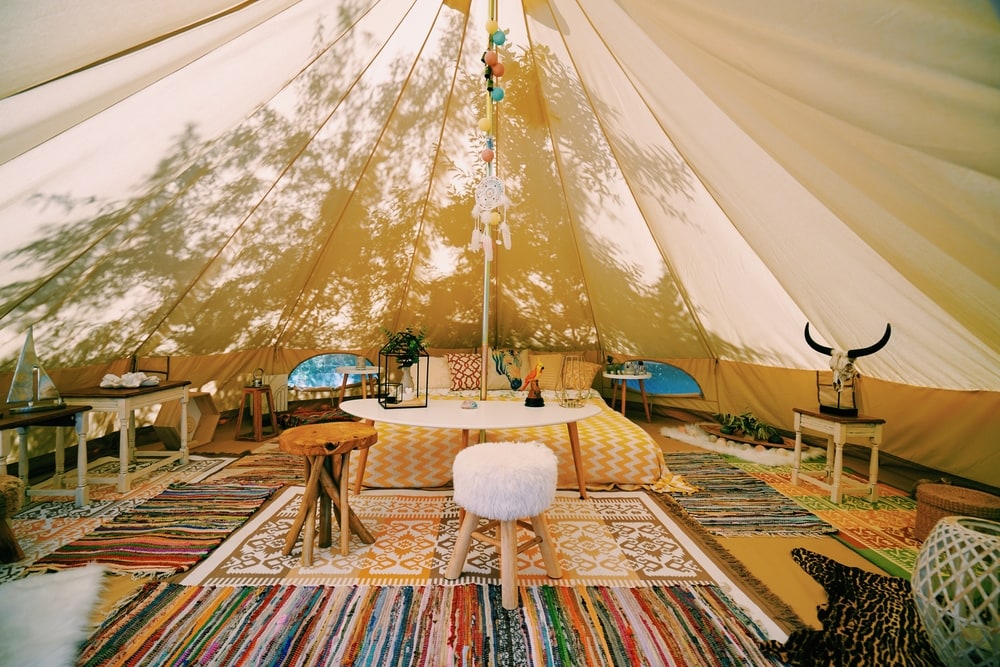
Read each cabin description carefully, though, because some cabins come with no amenities whatsoever. Extremely remote cabins will often only have wood stoves, bed frames with mattresses, and cabinet space. Primitive cabin camping might still be an excellent option for your family, though!
Camping in a cabin can cost you anywhere from $55/night to $300+ a night, depending on location and amenities.
5. RV Camping

Growing in popularity by the day, it seems, RV camping is a beautiful way to get out into the woods while also enjoying modern-day amenities. RVs come in all different shapes and sizes. Some RV’s hook onto the hitch of your truck and tow behind. 6-Wheelers are a medium-sized RV that requires a truck to tow it and requires an experienced 6-wheel driver.
Other RVs are an all-in-one situation where the RV is also the car. These could be a converted van to the size of an 18-wheeler. Large RVs can tow a vehicle so that you can get out and about easily.

If sleeping on the ground, using camp bathrooms, and cooking outside is just not your cup of tea, RV camping might be the way to go! In an RV, you get to enjoy your own indoor kitchen, bathroom, and beds with actual mattresses.
RVs allow for campsite-provided hookups such as water and electricity. These hookups mean that you can enjoy a hot shower, flush your toilet, and keep your food cold in a fridge while parked at your campsite. If it’s in a house, you can find it in a recreational vehicle!
You also don’t have to get bummed out by a rainy day because instead of being stuck in a small cramped tent, you’ll be in your spacious RV where you can play games at your table, watch movies, and enjoy a home cooked meal—all uninterrupted by the weather.

Most RVs provide great storage features, so you can easily bring along camp chairs, sun umbrellas, all of the pop-up tents you would like, and more. Along with the underbelly storage, there’s regular storage such as kitchen cabinets for food, plates, and clothing storage.
If you want to try a more extended trip, such as a few months on the road or trying out the ‘van life,’ an RV will provide an ideal space for a home-away-from-home. Some RVs offer desks for your remote workspace or your child’s homeschool spot.
Recreational vehicles have quite a few options for campsite spaces and locations.
There are private RV campsites or RV parks, where the campsite is exclusive to all sizes and types of RVs. At sites like these, you will be guaranteed water and electric hookups. Some of these sites have long-term options, so you could stay for an entire season or park your RV for years as a summer home getaway. These parks provide playgrounds, swimming pools, tennis courts, and clubhouses.

RVs are also welcome at public and private campsites that allow tent campers. These sites may have rules and regulations about the size of your RV. Some of these sites are smaller and only allow smaller RVs or trailers. You also have to be careful about hook-ups. Some sites may provide them, whereas others might not.
There are often RV exclusive sites at National parks, where there is more room and hookups. Then there are sites where you are allowed smaller vans and trailers, where your neighbor may be a tent camper. These sites may or may not have hookups. Then there are sections of the park that are tent only.
One of the most significant downsides to RV camping is that it may limit you on where you can stay and how remote you can be. The most remote and private campsites are typically catered to tent camping and often don’t have amenities for RVs, especially large ones.
New RVs can cost anywhere from $14,000 to $200,000 while renting an RV can cost you $50/night to $300 a night.
6. Tent Trailer Camping

Loking for other tent alternatives? Tent trailers, or pop-up campers, are compact trailers that you quite literally ‘pop-up’ when you set them up at your campsite. They typically have a bed on each end, and then the middle portion that pops up has a dinette, kitchen, and small living space. Of course, different models contain different amenities.
Pop-up campers are pretty similar to RV campers but have many benefits. For one, pop-ups are easier to tow since they weigh significantly less. Most vans, SUVs, and even some heavy-duty cars can pull a pop-up.
Because they are compact and lighter, pop-ups are easier on the gas mileage. And along the same line, they will save you some money with the overall purchase as pop-ups are less expensive than full-size RVs.

A-frame pop-ups are an excellent option for couples who would like something in between a tent and an RV. A-frames are hard-sided, typically only offer one bed, and have more storage than a traditional pop-up.’
With all of these great benefits, keep in mind that a pop-up camper will lack many amenities that a full-size RV will offer. Typically, pop-ups have little to no storage in them, which means you’ll have to pack everything into the car. Most do not provide water storage, bathrooms, or running water options. This may not be a problem at all for some, depending on where you choose to camp.
Depending on the size of your pop-up, you may be allowed in more remote places than an RV. It all depends on the campsite rules, so make sure to read those carefully before reserving your site.
Pop-up trailers cost an average of $10,000 to $20,000 and can be cheaper to rent per night than an RV.
You may also like: Check Out This Ultimate Beginners Camping Guide for Setting Up Your First Campite
Basic Gear Requirements for Camping
Shelter

Shelter is number three on the priority list of survival (after water and food), making it extremely important to stay out in the wilderness for multiple nights. Whether you are using a type of tent, a hammock set up, staying in a cabin, or a tarp for the ground and coverage, having a plan for your shelter is critical.
Sleeping bag

You’ll be delighted with yourself if you find the space to bring along your sleeping bag for an overnight trip into the wilderness. Sleeping bags designed for camping come in different shapes, materials, styles, and temperature ranks. While these can be amazing, tiny, and keep you warm well into tundra-like temperatures, any sleeping bag is suitable for your first camping trip, as long as the weather isn’t extreme.
Even if you are expecting warmer weather during the night, still bring a sleeping bag. If it gets too cold, you’ll be safe, and if not, you’ll have extra padding on your bed.
Bug spray

Even if the creepy crawlies don’t bother you, bug spray is necessary for any camping trip. While there are some tricks to keeping bugs away, such as making a campfire, eating lots of garlic, and burning cattails (the plant!!), nothing keeps pesky mosquitoes away like bug spray. Learn the other ways to repel mosquitoes when camping, and safeguard yourself against these potentially harmful insects.
Cooler or Fridge

How to keep your food and beverages cold while camping can be a little tricky, but it is also necessary when camping if you want to make fresh home-cooked meals. Like everything else with camping, there are hundreds of different coolers to choose from before trekking into the woods. Do your research before buying a cooler, and make sure you pack it well!
What NOT to Bring!
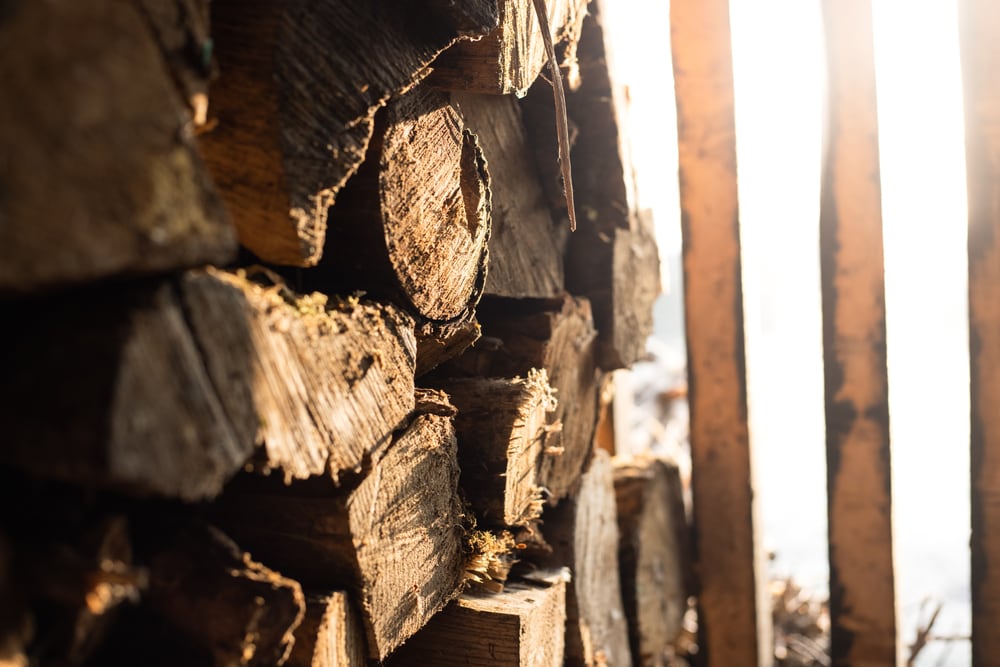
Firewood! Most National and State Parks do not let you bring your firewood along with many private campgrounds. The reasoning behind this is that invasive species can easily live in firewood. If you bring firewood with you, make sure you have a slip that shows that your firewood was kiln-dried (since nasty bug-a-boos can’t survive the kiln) or from a local source. If your firewood is from a felled tree or seasoned, leave it at home!
You may also like: Check out These 23 Campfire Games You and Your Loved Ones Would Definitely Enjoy
What is the Best Type of Camping for My Family?

Any person, group, or family can achieve all types of camping. You do not have to be a 20-something man to backpack a thru-hike for multiple nights!
Single

Single camping is a beautiful, magical experience where you can get to know your own self and do some deeply needed self-care. This said, you could achieve any camping style as a single camper. If you decide to go backpacking or primitive tent camping, read the trail or campsite carefully. Some trails tell you that you hike with a partner. These may not be the best solo trips to take. Whatever you choose, make sure someone at home has your itinerary and a way for the two of you to contact each other.
Family with Kids

According to statistics, tent camping is most popular among families with kids. This might be because tent camping can be easy on the wallet and highly achievable with a family. But in reality, all types of camping can be family-friendly, even backpacking.
Seniors

Statistically speaking, most seniors camp in an RV or a cabin. Repeatedly sleeping on the hard ground and crouching into a tent can be difficult on the body (at any age, really). Having a nice supportive mattress and a full-sized kitchen along with modern-day amenities might be a necessity to take into consideration.
On a Budget
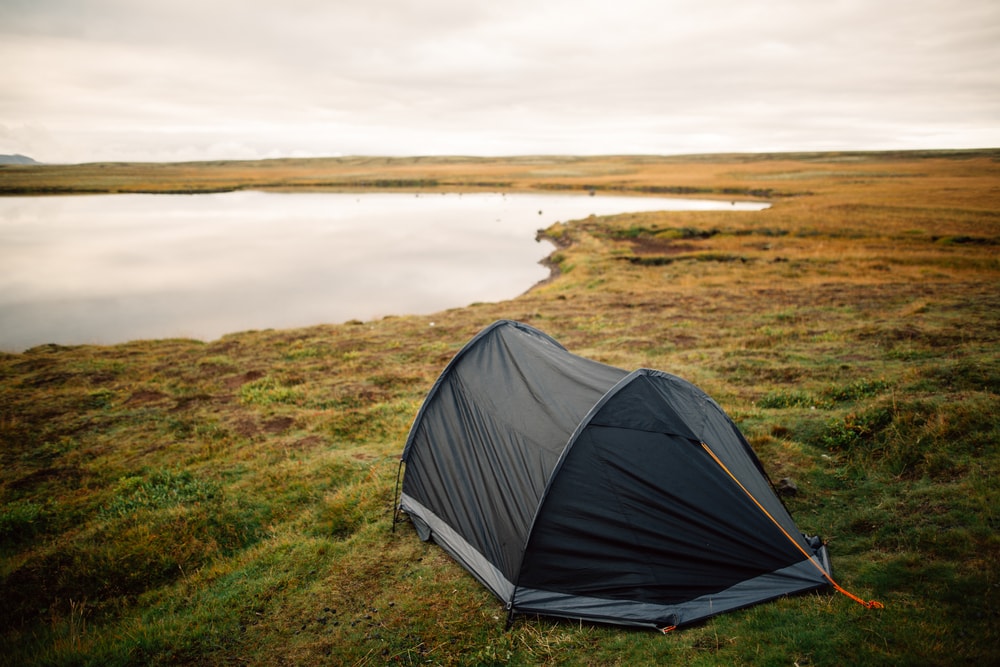
Easily the most affordable camping situation is in a tent. Nightly tent spaces can be free to inexpensive, and most beginning gear is affordable. Check out bargain bins and resale sights to save big on tents, camp chairs, and kitchen camping gear. And remember, being out in the wilderness is about getting away! Don’t worry about bringing every gadget and electronic device with you!








